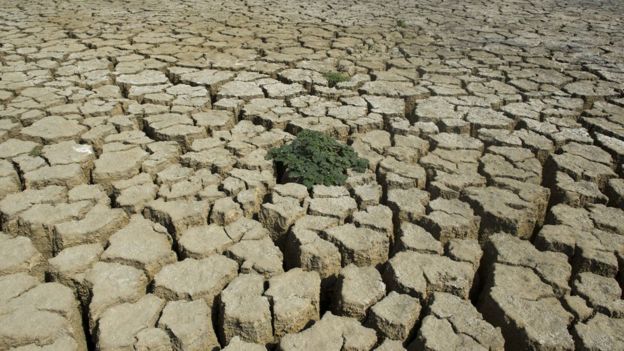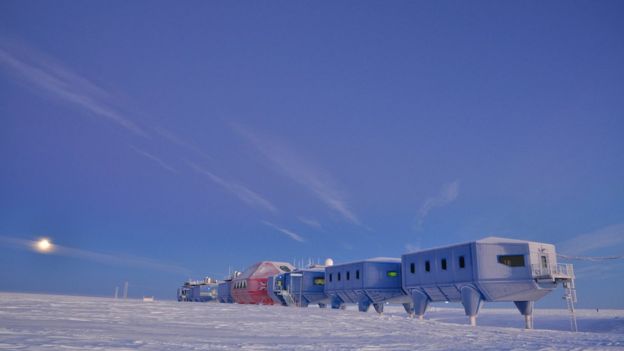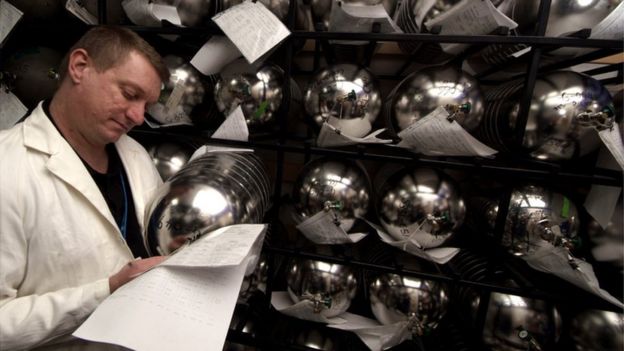Navigation
Install the app
How to install the app on iOS
Follow along with the video below to see how to install our site as a web app on your home screen.

Note: This feature currently requires accessing the site using the built-in Safari browser.
More options
You are using an out of date browser. It may not display this or other websites correctly.
You should upgrade or use an alternative browser.
You should upgrade or use an alternative browser.
If carbon dioxide is creating all this horrible global warming, why don't we just plant more trees?
- Thread starter Blackrook
- Start date
- Banned
- #2
According to St. Ronnie, trees cause air pollution.
Carbon dioxide is a natural part of the Earth's environment, and if we have too much of it, all we have to do is plant billions of trees to soak it up.
Why is that never given as an option?
First, we are planting many more trees.
Second, it's not "an option" because it's not even close to doing enough. After old world diseases wiped out the new world population and plague devastated the old world, vast tracts of farmland around the globe went back to forest and jungle. That pulled 7 ppm of CO2 out of the air. Current emissions are raising CO2 by about 3ppm a year. Reforesting a large portion of the world would counteract less than 3 years of emissions. And we couldn't do it on that scale anyways, being the farmland is needed to feed people.
Marion Morrison
Diamond Member
- Feb 10, 2017
- 59,298
- 16,837
- 2,190
- Banned
- #4
Grass absorbs like 6x as much CO2.
I evaporate CO2 for why not every now and then.
I evaporate CO2 for why not every now and then.
Marion Morrison
Diamond Member
- Feb 10, 2017
- 59,298
- 16,837
- 2,190
- Banned
- #5
Carbon dioxide is a natural part of the Earth's environment, and if we have too much of it, all we have to do is plant billions of trees to soak it up.
Why is that never given as an option?
First, we are planting many more trees.
Second, it's not "an option" because it's not even close to doing enough. After old world diseases wiped out the new world population and plague devastated the old world, vast tracts of farmland around the globe went back to forest and jungle. That pulled 7 ppm of CO2 out of the air. Current emissions are raising CO2 by about 3ppm a year. Reforesting a large portion of the world would counteract less than 3 years of emissions. And we couldn't do it on that scale anyways, being the farmland is needed to feed people.
Derp! 1 field of grass, problem solved.
Old Rocks
Diamond Member
Were you to look at scientific literature, you would find articles that examine that very idea. We do not have enough land to plant enough plants, of any kind, that would sequester the amount of CO2 we are putting into the atmosphere.Carbon dioxide is a natural part of the Earth's environment, and if we have too much of it, all we have to do is plant billions of trees to soak it up.
Why is that never given as an option?
task0778
Diamond Member
Carbon dioxide is a natural part of the Earth's environment, and if we have too much of it, all we have to do is plant billions of trees to soak it up.
Why is that never given as an option?
Good question. Is somebody working on creating plant life that takes in huge amounts of CO2 and releases huge amounts of O2? Trees, grass, I don't give a crap, let's geo-engineer the planet as much as possible. And work on converting seawater to fresh, at least enough to use for irrigation. Maybe we can grow edible plants and get a 2fer, food and less carbon. People talk about terraforming Mars, how about we do this planet first?
Old Rocks
Diamond Member
Since wind and solar are both the cheapest way to generate electricity at present, and getting less costly every day, how does that cripple the economy? The grid scale batteries, being installed right now, in a decade will make both 24/7, and bring there cost down even more.
I really don't know why you idiots have to keep repeating that silly lie that using renewables will cripple our economy. Right now there are far more jobs in solar than in mining coal. And the people working in solar are not dooming themselves to die of black lung.
I really don't know why you idiots have to keep repeating that silly lie that using renewables will cripple our economy. Right now there are far more jobs in solar than in mining coal. And the people working in solar are not dooming themselves to die of black lung.
Granny says dat's why it's been hard to catch her breath lately...

Record surge in atmospheric CO2 seen in 2016
Mon, 30 Oct 2017 - CO2 in Earth's atmosphere jumped to a record in 2016, says the World Meteorological Organization.

Record surge in atmospheric CO2 seen in 2016
Mon, 30 Oct 2017 - CO2 in Earth's atmosphere jumped to a record in 2016, says the World Meteorological Organization.
Concentrations of CO2 in the Earth's atmosphere surged to a record high in 2016, according to the World Meteorological Organization (WMO). Last year's increase was 50% higher than the average of the past 10 years. Researchers say a combination of human activities and the El Niño weather phenomenon drove CO2 to a level not seen in 800,000 years. Scientists say this risks making global temperature targets largely unattainable. This year's greenhouse gas bulletin produced by the WMO, is based on measurements taken in 51 countries. Research stations dotted around the globe measure concentrations of warming gases including carbon dioxide, methane and nitrous oxide. The figures published by the WMO are what's left in the atmosphere after significant amounts are absorbed by the Earth's "sinks", which include the oceans and the biosphere.

Emissions from human activities have levelled off but concentrations in the atmosphere continue to grow
2016 saw average concentrations of CO2 hit 403.3 parts per million, up from 400ppm in 2015. "It is the largest increase we have ever seen in the 30 years we have had this network," Dr Oksana Tarasova, chief of WMO's global atmosphere watch programme, told BBC News. "The largest increase was in the previous El Niño, in 1997-1998 and it was 2.7ppm and now it is 3.3ppm, it is also 50% higher than the average of the last ten years." El Niño impacts the amount of carbon in the atmosphere by causing droughts that limit the uptake of CO2 by plants and trees. Emissions from human sources have slowed down in the last couple of years according to research, but according to Dr Tarasova, it is the cumulative total in the atmosphere that really matters as CO2 stays aloft and active for centuries. Over the past 70 years, says the report, the increase in CO2 in the atmosphere is nearly 100 times larger than it was at the end of the last ice age.

Droughts related to El Niño, such as this one in Colombia, limited the ability of plants and trees to soak up carbon
Rapidly increasing atmospheric levels of CO2 and other gases have the potential, according to the study to "initiate unpredictable changes in the climate system... leading to severe ecological and economic disruptions." The study notes that since 1990 there has been a 40% increase in total radiative forcing, that's the warming effect on our climate of all greenhouse gases. "Geological-wise, it is like an injection of a huge amount of heat," said Dr Tarasova. "The changes will not take ten thousand years like they used to take before, they will happen fast - we don't have the knowledge of the system in this state, that is a bit worrisome!" According to experts, the last time the Earth experienced a comparable concentration of CO2 was three to five million years ago, in the mid-Pliocene era. The climate then was 2-3C warmer, and sea levels were 10-20m higher due to the melting of Greenland and the West Antarctic ice sheets.

The British Antarctic Survey Halley base was one of the stations where atmospheric measurements were made
Other experts in the field of atmospheric research agreed that the WMO findings were a cause for concern. "The 3ppm CO2 growth rate in 2015 and 2016 is extreme - double the growth rate in the 1990-2000 decade," Prof Euan Nisbet from Royal Holloway University of London told BBC News. "It is urgent that we follow the Paris agreement and switch rapidly away from fossil fuels: there are signs this is beginning to happen, but so far the air is not yet recording the change." Another concern in the report is the continuing, mysterious rise of methane levels in the atmosphere, which were also larger than the average over the past ten years. Prof Nisbet says there is a fear of a vicious cycle, where methane drives up temperatures which in turn releases more methane from natural sources. "The rapid increase in methane since 2007, especially in 2014, 2015, and 2016, is different. This was not expected in the Paris agreement. Methane growth is strongest in the tropics and sub-tropics. The carbon isotopes in the methane show that growth is not being driven by fossil fuels. We do not understand why methane is rising. It may be a climate change feedback. It is very worrying."

Scientists handling air samples at the Cape Grim monitoring station in Australia
The implications of these new atmospheric measurements for the targets agreed under the Paris climate pact, are quite negative, say observers. "The numbers don't lie. We are still emitting far too much and this needs to be reversed," said Erik Solheim, head of UN Environment. "We have many of the solutions already to address this challenge. What we need now is global political will and a new sense of urgency." The report has been issued just a week ahead of the next instalment of UN climate talks, in Bonn. Despite the declaration by President Trump that he intends to take the US out of the deal, negotiators meeting in Germany will be aiming to advance and clarify the rulebook of the Paris agreement.
Record surge in atmospheric CO2 in 2016
TheOldSchool
Diamond Member
- Banned
- #11
Indeed. Plant as many trees as you canCarbon dioxide is a natural part of the Earth's environment, and if we have too much of it, all we have to do is plant billions of trees to soak it up.
Why is that never given as an option?

If ya remove alla CO2, it'll kill alla trees...

Removal of carbon dioxide ‘no silver bullet’: scientists
Fri, Feb 02, 2018 - IMPRACTICAL: While some technologies could have a role to play, all have drawbacks making them difficult to use on a large scale, a climate expert said

Removal of carbon dioxide ‘no silver bullet’: scientists
Fri, Feb 02, 2018 - IMPRACTICAL: While some technologies could have a role to play, all have drawbacks making them difficult to use on a large scale, a climate expert said
Technologies to remove carbon dioxide from the atmosphere to help tackle global warming only have limited potential and more effort should be made to reduce emissions, European scientists said in a report on Wednesday. Proposals to use climate technologies, ranging from spraying sun-dimming chemicals high above the Earth to capturing and storing carbon dioxide underground, have been gaining more attention as the urgency to act on climate change mounts. Under the 2015 Paris Agreement, world governments have agreed to limit global warming to well below 2?C above preindustrial levels, but a large gap remains between nations’ emissions plans and the reductions needed.
The European Academies’ Science Advisory Council, formed from the national science academies of EU members, has reviewed scientific evidence about several options for removing carbon dioxide from the atmosphere with so-called negative-emission technologies. Examples of such technologies include the direct capture of carbon dioxide and trapping it underground (carbon capture and storage); afforestation and reforestation; land management to increase and fix carbon in soils; and ocean fertilization. The council, which advises European policymakers, said these technologies have “limited realistic potential to remove carbon from the atmosphere” and not at the scale in some climate forecasts, such as several gigatonnes of carbon each year after 2050.
Their deployment on a large scale would also involve high economic costs and have major impacts on terrestrial or marine ecosystems, the council said in the report. “Technologies capable of taking out CO2 [carbon dioxide] from the atmosphere are certainly no silver bullet — a point that should drive policymakers to renewed efforts to accelerate emissions reductions,” the report said. However, the world will need all possible tools to limit warming and some of these technologies can make contributions to remove carbon dioxide from the atmosphere even now, while further research, development and demonstration might allow others to make a limited future contribution, it added.
Commenting on the report, Andrew Watson, Royal Society research professor at the University of Exeter, said that while some technologies for removing carbon dioxide from the atmosphere could have a role to play in reducing climate change, all have drawbacks making them difficult to use on a large scale. “So our main focus and best hope for avoiding the worst effects of climate change still needs to be reducing our emissions,” Watson said. Last week, a leaked draft UN report said there is a high chance that the levels of carbon dioxide removal which might be required to meet the Paris goals might not be feasible due to the required scale and speed of technology deployment.
Removal of carbon dioxide ‘no silver bullet’: scientists - Taipei Times
- Mar 7, 2014
- 45,091
- 9,122
- 2,030
Carbon dioxide is a natural part of the Earth's environment, and if we have too much of it, all we have to do is plant billions of trees to soak it up.
Why is that never given as an option?
Where the fuck have you been? People have been talking for A LONG TIME about not cutting down the Amazon rain forest.
Benefits of Nature and Why You Should Plant More Trees
"Why You Should Plant More Trees – Research Shows Trees Grow Happier People"
Amelia Womack is visiting Upper Calder Valley
Here's part of the Green Party in the UK advocating planting more trees.
"Green Party Deputy Leader Amelia Womack is visiting Upper Calder Valley on Thursday 28th September to find out about tree planting and Slow the Flow natural flood reduction. Treesponsibility has kindly agreed to show Amelia around various tree planting and slow the flow flood reduction sites."
I could go on all day.
Just because you didn't see it, doesn't mean it exists.
CarlinAnnArbor
Diamond Member
- Aug 15, 2016
- 55,767
- 40,648
- 3,615
Liar!Were you to look at scientific literature, you would find articles that examine that very idea. We do not have enough land to plant enough plants, of any kind, that would sequester the amount of CO2 we are putting into the atmosphere.
None of this is even necessary ASSUMING CO2 is a poison (IT IS NOT!).
Increase CO2 and land and SEA plant life flourishes ON ITS OWN.
It's not a problem, an it it were, IT IS SELF CORRECTING.
Old Rocks
Diamond Member
And you are a fucking idiot. We have seen the ramp up of GHGs in the past geological record. And that ramp up did not solve itself. There were several mass extinctions caused by the rapid ramp up or down of GHGs.
Fort Fun Indiana
Diamond Member
- Mar 10, 2017
- 92,547
- 58,306
- 2,645
No. At no point has tgis planet been faced with a species removing fixed carbon from deep in the ground and adding it to our carbon cycle. Everything you said is wrong.Liar!Were you to look at scientific literature, you would find articles that examine that very idea. We do not have enough land to plant enough plants, of any kind, that would sequester the amount of CO2 we are putting into the atmosphere.
None of this is even necessary ASSUMING CO2 is a poison (IT IS NOT!).
Increase CO2 and land and SEA plant life flourishes ON ITS OWN.
It's not a problem, an it it were, IT IS SELF CORRECTING.
Similar threads
- Replies
- 27
- Views
- 472
- Replies
- 96
- Views
- 1K
- Replies
- 58
- Views
- 615
Latest Discussions
- Replies
- 46
- Views
- 287
- Replies
- 80
- Views
- 608
- Replies
- 580
- Views
- 3K
- Replies
- 177K
- Views
- 2M
- Replies
- 37
- Views
- 113
Forum List
-
-
-
-
-
Political Satire 8045
-
-
-
-
-
-
-
-
-
-
-
-
-
-
-
-
-
-
-
ObamaCare 781
-
-
-
-
-
-
-
-
-
-
-
Member Usernotes 469
-
-
-
-
-
-
-
-
-
-
